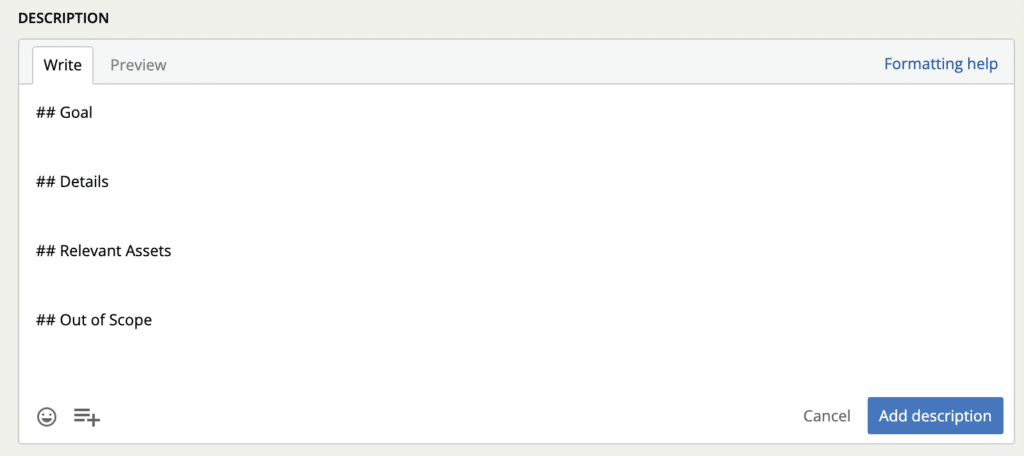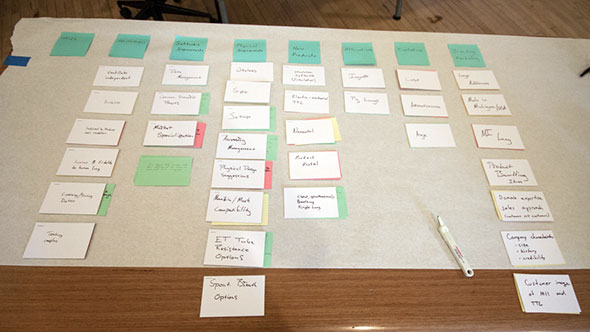Article summary
In today’s entry in my series on Agile Practices for Normal Life, we’re going to take a deeper dive into our backlog. We’ll define our stories and estimate the effort to complete them.
If you’re new here, you can get caught up on the journey so far with the following posts:
- Agile Practices for Normal Life – An Introduction
- Agile Practices for Normal Life – Project Kickoff
- Agile Practices for Normal Life – Building a Backlog
Defining the Stories
At this point, I’ve already dumped a chunk of “stories,” or to-dos, into my Pivotal Tracker backlog. However, I didn’t spend time defining the scope of each of those stories or determining how much time it will take to complete them.
I prefer to use a template for story definition. This way, every story will be sure to include the same types of relevant information. It’s also nice and quick since most backlog management tools have a template feature.
On a software project, my story template typically looks something like this:

However, not all of the criteria in my software story template are relevant for “normal life.” Because of that, I adjusted my template to be this:

My “normal life” template includes:
- Goal – A one-sentence description of what I am hoping to achieve with this task.
- Details – Any additional information needed.
- Relevant Assets – For tasks that require photos or links to websites, I stuff them here.
- Out of Scope – This criteria is to keep me from sneaking in things that are not needed for this task!
Estimating Stories
After I fleshed out all my stories with details, I was ready to start estimating the effort it would take to complete the stories.
There are many ways to go about estimating stories. My preferred method is to estimate relative effort, NOT time, and to do so using Fibonacci numbers as my scale.
What is Relative Effort?
One of my favorite ways to describe estimating via relative effort is to think about cleaning a house. It might be tempting to say “each room will take me two hours to clean,” but that’s typically not accurate. A small but very messy kitchen will likely take more time, effort, and cleaning products to clean than a larger but tidy bedroom.
The first time I estimate stories for a new project, I like to start with a story that feels average in effort. In the house example, this might be that large but tidy bedroom. The kitchen is certainly more work to clean, but a powder room will be less. I use that average bedroom to estimate via comparison. Once you get into a groove with your estimates, it becomes more and more clear what a five-point story might be vs. a 21 or one-point story.
What about Risk?
When I estimate effort, I also factor in risk. For example, one of my tasks in my “normal life” backlog is to prep our VW Beetle to sell it. This is important; I can’t list the car for sale without it being ready to sell. One of the “prep” items is swapping out a headlight. This might sound like a simple task, but the car is old, and it is not a standard American car. That means sometimes “simple” tasks turn into a lot more effort than I anticipated.
What if I can’t get the headlight off? What if a part breaks, and I am left waiting for a replacement to come in the mail?
Because there are a few risks associated with this task, and because not completing this story would block others, I might estimate this story a smidge higher than I would if these risks were absent.
Up Next
I was really excited to get to defining and estimating stories because it means that I will soon be able to project how many stories I can complete in a given “sprint.”
Next time on Agile Practices for Normal Life, we will talk about just that — planning a sprint and estimating velocity!

